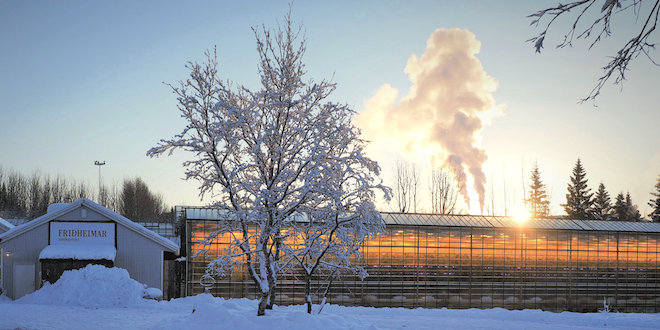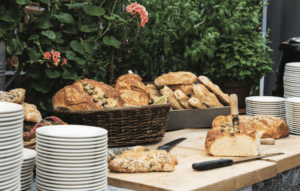

Aug 10, 2022Friðheimar grows, processes and serves tomato dishes to tourists
It’s hard to believe that a remote Icelandic agritourism business could draw 180,000 visitors – half of the country’s population – in a year, but in 2019 it did.
Iceland is more known for its remoteness and cold, dark winters than it is for greenhouse production.
That’s starting to change, though, thanks to the hard work and dedication of Friðheimar, a greenhouse tomato operation and horse farm run by Knútur Rafn Ármann and his wife, Helena Hermundardóttir.
Friðheimar didn’t start out as a tourist destination. It started as a small dream of a young couple who met in college when they were just 17 years old. She was studying horticulture, specializing in indoor production, and he studied agriculture.
“We had the dream to move to the countryside and try to create our life by growing vegetables in the greenhouses and breeding horses,” Knútur said.


Following graduation in 1995, the young couple bought a rundown greenhouse farm about 60 miles from Reykjavík in a high-tourism area known as the Golden Circle. The farm was in disrepair, so the couple spent the first years building it up. Their aim at that time was to grow greenhouse tomatoes for the market.
Today, Friðheimar produces tomatoes year-round under 11,000 square meters (118,403 square feet) of glass, delivering an average of 3,300-4,400 pounds of tomatoes each day. The greenhouse operation is complemented by a horse breeding operation, which currently has 48 horses.
In 2008, Knútur and Helena decided to open their farm up to tourism with the aim to teach visitors about horse breeding and tomato production. That first year they welcomed 900 visitors. By 2019, the number of visitors rose to 180,000. While a handful are local tourists, 85% of visitors come from outside of Iceland.
“That was supposed to be our side business, but it has turned out to be one of our main businesses,” said Knútur, adding that the company now employs 64 people, only 22 of which work in the greenhouse. Many of the staff are focused on serving tourists.
In 2012, Friðheimar added a restaurant. Situated in the middle of the greenhouse, its menu features a variety of unique tomato dishes. The idea was to create a food experience for visitors, said Knútur, adding that they hired a chef. The menu boasts an array of dishes including pasta with homemade tomato sauce, and fresh mussels in — you guessed it — tomato sauce. They offer some truly one-of-a-kind menu items, like green tomato and apple pie, tomato ice cream, and even tomato beer.
Visitors to Friðheimar can take food souvenirs home with them, as the kitchen processes a few tomato-based products on-site for sale in their little shop.
“That is the big thing for us, is to make this what we can call a food experience,” said Knútur. “Because if you get some knowledge about the background, food tastes a little bit different.”
Visitors to Friðheimar may be surprised to learn that tomatoes can be grown year-round in Iceland. But Knútur said they do — and sustainably. Water from natural hot springs is used to warm buildings, and while the greenhouse does require significant energy, Iceland produces hydroelectricity, which is also viewed as sustainable. Carbon dioxide, necessary for greenhouse production, is diverted from a nearby farm.
“In Iceland, we have really good quality cold water coming from our mountains, so I can water my plants with the same good water that we are drinking in our houses,” Knútur said.


Inside the greenhouse, he and Helena use biological pest control, using good insects to take out the bad. They also bring bees in from the Netherlands for pollination.
What Friðheimar is doing is not new. There are many greenhouse operations in Iceland. In fact, most cucumbers, tomatoes, sweet peppers, lettuce and fresh herbs carry a label showing that they’re produced locally. But it’s not what they’re doing that’s unique, but how they do it. Knútur and Helena are on a mission to close the gap between farmer and consumer by showing them how food is produced and why.
“We even put a picture of me on the backside of the ticket because we think it’s really important to make the line between the farmer and the buyer shorter,” he said.
The real connection starts on the farm where people and food come together.
“When they leave, they have something in their stomach and they have something in the brain,” Knútur concluded. “I think that is really, really important for agriculture and horticulture. It’s important to have open places like this because it gets people back to their roots.”
– Melanie Epp, contributing writer














